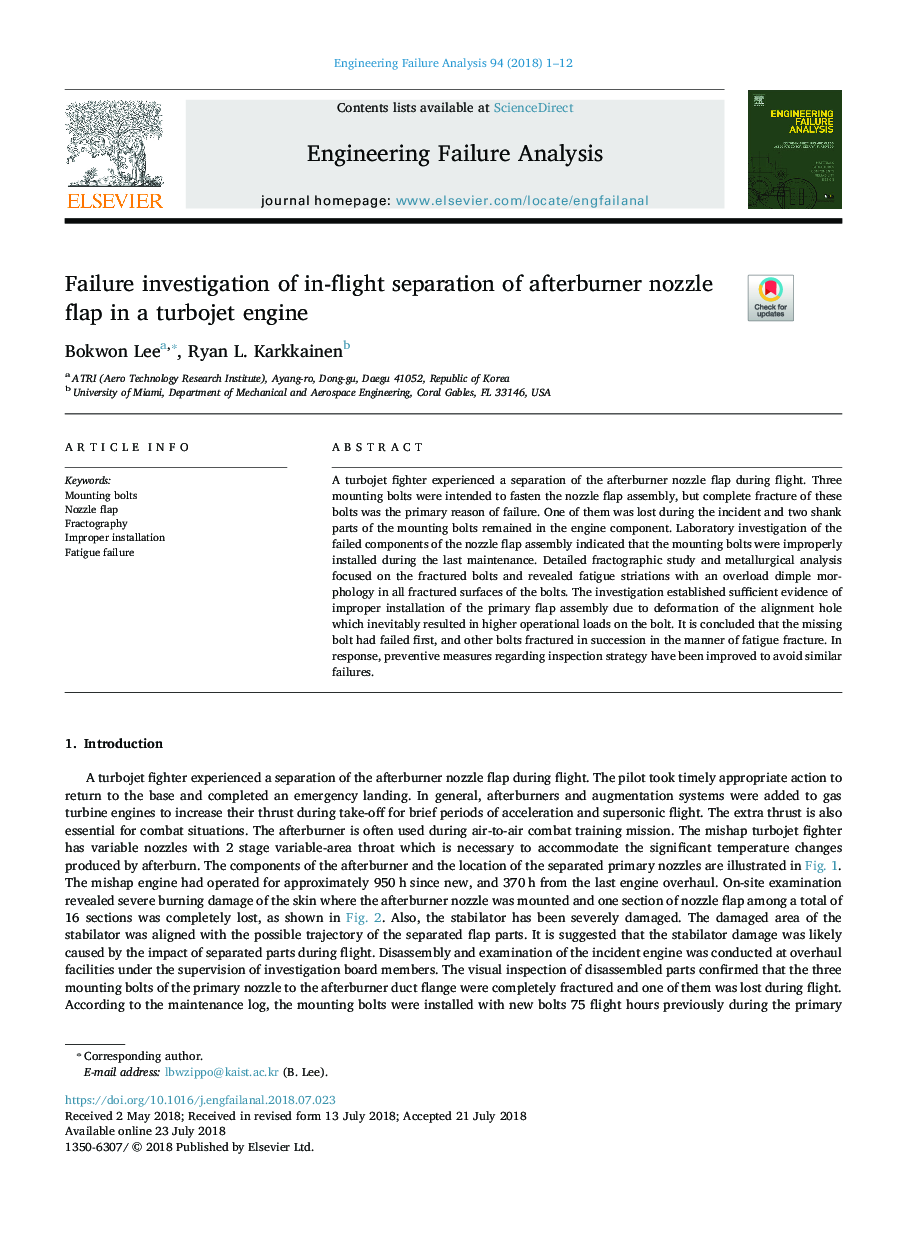| Article ID | Journal | Published Year | Pages | File Type |
|---|---|---|---|---|
| 7166935 | Engineering Failure Analysis | 2018 | 12 Pages |
Abstract
A turbojet fighter experienced a separation of the afterburner nozzle flap during flight. Three mounting bolts were intended to fasten the nozzle flap assembly, but complete fracture of these bolts was the primary reason of failure. One of them was lost during the incident and two shank parts of the mounting bolts remained in the engine component. Laboratory investigation of the failed components of the nozzle flap assembly indicated that the mounting bolts were improperly installed during the last maintenance. Detailed fractographic study and metallurgical analysis focused on the fractured bolts and revealed fatigue striations with an overload dimple morphology in all fractured surfaces of the bolts. The investigation established sufficient evidence of improper installation of the primary flap assembly due to deformation of the alignment hole which inevitably resulted in higher operational loads on the bolt. It is concluded that the missing bolt had failed first, and other bolts fractured in succession in the manner of fatigue fracture. In response, preventive measures regarding inspection strategy have been improved to avoid similar failures.
Keywords
Related Topics
Physical Sciences and Engineering
Engineering
Industrial and Manufacturing Engineering
Authors
Bokwon Lee, Ryan L. Karkkainen,
